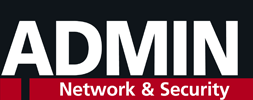Articles
ZFS on Linux helps if the ZFS FUSE service refuses to work
The new version 10 of FreeBSD can cause Linux admins problems when attempting to reconstruct data from ZFS pools. The solution comes courtesy of the ZFS on Linux project.
Building better software on schedule with DevOps
DevOps makes IT departments more efficient and makes their employees happier – but what is it? We describe some basic ingredients of the DevOps recipe.
Do You Know Juno?
The OpenStack cloud platform plays a major role in the increasingly important cloud industry, so a new release is big news for cloud integrators and admins. The new version 2014.2 "Juno" release mostly cleans up and maintains the working model but adds a few innovations.
Up close with SUSE Linux Enterprise 12
The latest new version of SUSE Linux Enterprise offers some promising new features for admins.
Security data analytics and visualization with R
Conduct improved security analysis and visualization of security-related data using R, a scripting language for statistical data manipulation and analysis.
The new openAttic 1.1 storage manager
Although the lastest version of the openAttic storage manager was announced as a conservative maintenance release, openAttic 1.1 is actually a feature-rich new development.
Automation with PXE Boot
We show how to save time and stress by automating your system installations with PXE boot.
Coming to grips with grep
Now is the time to re-examine and consider again the power of grep and its relatives.
Creating SmartOS zones using UCARP
We show how to create highly available SmartOS zones using UCARP.
Data Analysis with R and Python
The statistical programming language R dissects its database in a masterful way, and you can embed your R in Python using the Rpy2 interface.
Subscribe to our ADMIN Newsletters
Subscribe to our Linux Newsletters
Find Linux and Open Source Jobs
Most Popular
Support Our Work
ADMIN content is made possible with support from readers like you. Please consider contributing when you've found an article to be beneficial.











